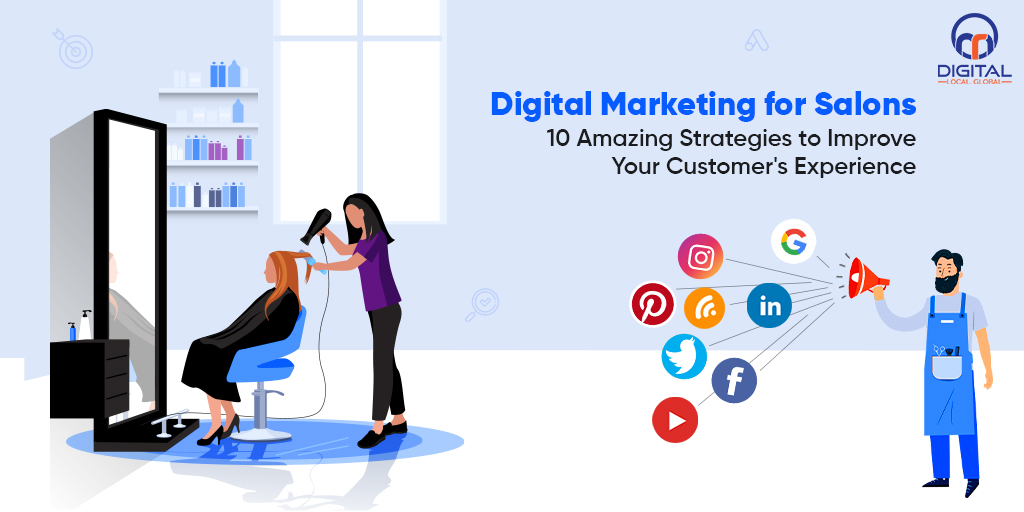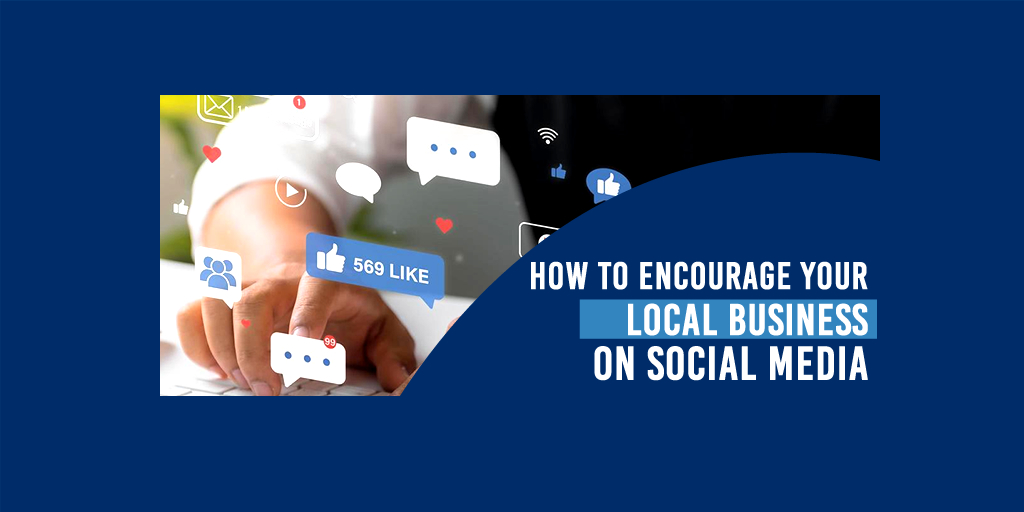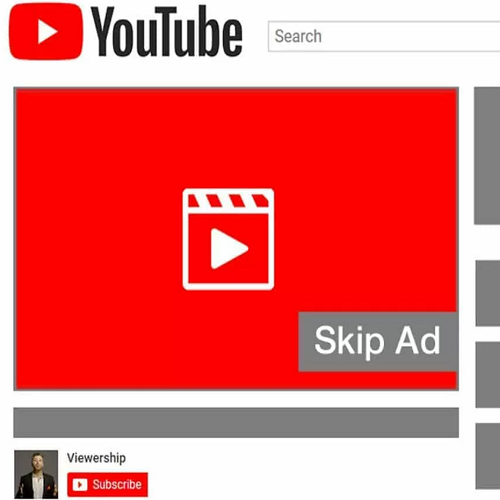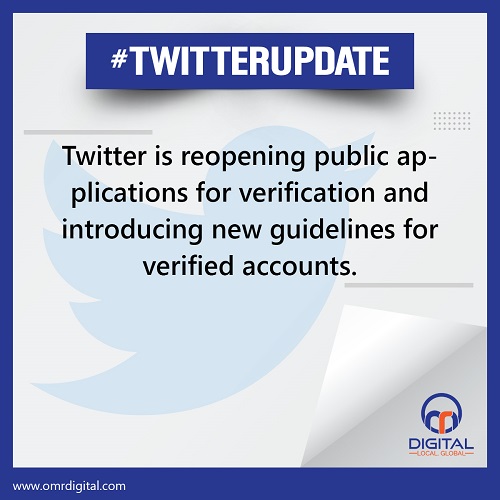
Contact Us
Related Posts
Category
So many companies engage in haphazard social media marketing. They realize they need to do something about social media, but they aren’t sure what. Some companies simply offer junior employees access to the company’s social media pages because they are young and should be well-versed in the topic. But we’ve moved on from a post-and-hope social media approach. Every company should develop a social media marketing plan and manage its social media accounts with care and precision. If you don’t, you risk losing market share and exposure to your rivals. Even if you believe in the benefits of influencer marketing, you will still need to manage some social media accounts. Influencer marketing is frequently used to drive traffic to your social media pages. Influencer marketing should be viewed as a natural extension of your company’s social media marketing efforts.
For businesses in 2021, here is our 14-step social media marketing strategy.
- Choose goals for social media marketing that are both relevant and achievable.
Many businesses that use social media have never taken the time to set relevant and realistic social media marketing goals. They are aware that they must use social media, but they are unsure why. Your social media marketing objectives must, of course, be integrated into your overall business strategy. In an ideal world, you’ll have defined strategic objectives for how you want your company to develop. Your social media marketing objectives should be in line with your overall company objectives.
Ensure that your objectives are SMART.
Far too often, people set hazy business objectives that have no significance when examined closely. Remember, you’re not setting goals just for the sake of setting goals. You’re creating them to aid you in developing the best social media strategy for your business. As a result, make sure your objectives are SMART:
- Measurable specifics
- Relevant and attainable
- The passage of time
- Social Media Objectives That Your Company Should Achieve
Your objectives will be unique to your company and will work in tandem with your overall objectives. However, here are some examples of social media targets you may want to think about (and document in a SMART-style format):
- Brand recognition is growing.
- Increasing the volume of sales by a certain amount
- Increasing the return on your investment
- Motivating customers to make more purchases in-store
- Develop a fan base
- Decide which metrics are the most important to you.
Too many companies cultivate a social profile and invest time and other resources into their social media accounts without ever determining whether or not they are successful. Unfortunately, since social analytics are not the same for every company, they can be a grey area. Once again, the most important social indicators would be related to the objectives you’ve set for yourself.
Don’t be seduced by vanity metrics like the number of followers someone has. We previously discussed why buying Instagram followers is a bad idea. In a perfect world, you’d look at the marketing targets you set earlier and figure out which metrics that tell you whether you’re on track. Post Reach, for example, is a useful statistic if your mission is to raise brand awareness. It will inform you of the extent to which your content has spread through social media platforms.
If your targets are more sales-oriented, or if you want people to take a specific action, you should pay attention to the number of Clicks. Tracking campaign clicks will give you a clear idea of what motivates people to buy or do what you ask. The engagements on your posts are likely to pique your interest. This demonstrates how people engage with the content and whether it resonates with them.
- Choose your target audience for social media.
One of the most popular social media blunders made by businesses is assuming that all of their followers would be beneficial. There’s a reason why pundits dismiss vanity metrics like Follower Numbers. It’s pointless to have a follower because he’ll be interested in what you’re sharing. Buying fake followers is probably the most serious issue. Fake followers do not engage with your account, as we wrote in 8 Reasons You Shouldn’t Buy Instagram Followers. Some of the bots aren’t even human people. They won’t be gaining any new clients in the near future. These users will not buy your goods, regardless of whether they are true or fake accounts. They won’t recommend you to anyone.
Return to the goals, you set in Step 1. It’s pointless to have social media followers who can’t help you achieve your objectives. In the majority of cases, you want your social media followers to be close to your target customers.
- Recognize your target audience on social media.
There are several different types of social media audiences. Social networking is used in a variety of forms for different people. You must use the same social media networks as your target audience if you want to achieve your objectives. Similarly, if you want to use influencer marketing, make sure that the influencers you work with have an audience that is similar to your target demographic. Perhaps you’re a Facebook-using middle-aged executive. You can’t automatically presume that your customers will invest their time on Facebook if you don’t personally fit the target market of your company. Sure, there were 2.27 billion monthly active Facebook users in Q3 2018, but if you want to hit a younger audience, you can use Snapchat or Instagram.
Examine the objectives you set for yourself in terms of social media marketing. Which social media platforms are most likely to assist you in achieving your objectives? You must have a thorough understanding of your client base to be effective in this endeavour. Now is the time to dust off any personas you might have created for your ideal customers. What are the characteristics of your clients, and how do they spend their time while interning? The more you understand your target market’s demographics and psychographics, the more effective your social media campaigns would be.
- Choose the most appropriate social media networks for your target audience
Some people are concerned about how they can find the time and energy to manage many social media accounts. You don’t have to in the vast majority of situations. All you have to do now is figure out which social media platforms are best for your business. You want to figure out which social media platforms your target market uses. It’s possible that you’ll need to do some preliminary research to figure out where your target audience congregates. This shouldn’t be too complicated if you’re familiar with your clients. If you don’t know, you could conduct a survey and ask them which social media accounts they prefer. You might start with your audience’s favourite social media network and then expand to include others where a large enough percentage has active accounts. However, you can normally limit yourself or three to five social media platforms.
Don’t waste time on social media platforms that aren’t used by your target audience. If a significant portion of your target group uses social media, you can join them. If they don’t seem interested in a website, you can skip it and save time and money. There’s one more thing you can think about to make life easier for yourself. Many companies find it easier to schedule posts in bulk using a social media marketing network. As a result, you might want to match your social media networks with those supported by your chosen social media marketing platform.
This is less relevant for video-sharing sites like YouTube, which don’t use content feeds and instead focus on content sources, and live-streaming platforms like Twitch, where you essentially run a live channel. You should also decide whether you want a single company-wide social media account or multiple accounts, each aimed at a specific audience.
- Examine your competitors’ social media strategies.
The majority of businesses are not self-contained. Competitors will almost always have a social media plan of their own. You’ll need to be aware of their activities. What are they trying to accomplish? Who is it that they’re after? What are the main phrases that they are attempting to dominate? You can easily analyse a competitor’s strengths and weaknesses to gain a deeper understanding of their capabilities. This should give you a better idea of what your industry’s future customers are looking for. You may be able to identify and manipulate your competitors’ vulnerable social areas.
- Set A social media budget that is reasonable
Let’s face it: we’re in the real world. No company should take its social media pages lightly. For most businesses, social media marketing is just as feasible as every other type of marketing, so plan accordingly. You won’t have much luck with social media if you just add that to the list of responsibilities the current office staff already has. On the other hand, you shouldn’t spend more on social media than you will realistically gain in increased revenue, or at the very least in increased brand recognition and popularity, if that’s your primary target. You should calculate a return on investment (ROI) from your social media spending, just as you would for any other type of marketing, keeping in mind the objectives you set earlier in your plan.
When deciding on a social media budget, think about how much you want to spend on all of your digital marketing efforts, regardless of platform. Then decide how much of the budget you’re willing to spend on social media.
- Prior to creating and promoting content, properly set up your accounts.
It is important that you properly set up your accounts. You’ll want to keep your visual style consistent across all of your social media platforms. On each network, use the appropriate colors, logos, and graphics. Don’t squander any of your online space. Make sure your bios and profiles are fully filled out. Make sure you connect to relevant websites and, if possible, create unique landing pages on your website for people who visit your website via your social media accounts. It’s worth spending the time to make sure that all of the photos in your bios and profiles are at the highest possible resolution for the social media platform. Best Image Sizes for Social Media – The Ultimate Guide includes these ideal sizes. When you build each account, keep in mind your target audience. Based on your bio or profile, consider whether your page would be of interest to these individuals.
- Make Appropriate Content to Share with your followers
When making material, there are four questions you should ask yourself:
- What is the ideal character count for? social media platform?
- What is the total number of hashtags used in each social media channel’s messages?
- Is it acceptable to use emoji in my social media messages?
- What sort of content is best for each channel?
Don’t overlook the value of photographs and videos. Visual content is 40 times more likely than other forms of content to be shared on social media. Instagram has become increasingly popular in recent years, and it has a strong visual component. On Instagram, the top brands have a 4.21 percent interaction rate per follower. That’s 58 times more than Facebook, and 120 times more than Twitter.
Produce a variety of materials. Although you want your content to have a consistent look across the board, particularly within individual social campaigns, you don’t want all of it to look the same. A variety of social media feeds appeals to people the most. They prefer a combination of appealing imagery, engaging videos, and even convincing text copy, depending on the social network.
- Make use of social media to promote your company.
While good content will eventually sell your social media channels, you must first build your audience. Before they can choose to follow you, people must first locate your networks. You can promote your networks in a number of ways, some of which are more obvious than others. Many of your social media accounts should have buttons on your website, such as on the home page, in the footer, and on the About and Communications sections. If you have an email list, any emails or newsletters you submit should include a link to your social media accounts. In the footer of any email, you can easily add links to your social media accounts.
You can, of course, promote your social media accounts in person. Incorporate them into the store’s signs and vintage commercials. Many businesses use their social media platforms to support each other. Tweets promoting your YouTube channel, for example, are a good example. On the profile page of most YouTube channels, you’ll find that the channel owner’s other social media accounts are mentioned. You can also run advertisements on your social media sites with a highly targeted audience to boost your social followers and brand awareness.
- Make an effort to connect with your target market.
People don’t just read, look at, or watch content on social media platforms. They use the internet to socialize and communicate with others. Businesses that are effective do not simply broadcast to their social media audiences. They talk to them as well. This is why, unless you have a large and varied target market and an army of people committed to this mission, you do not try to cover every social network. You will make the best use of your money by concentrating on the social networks that your target group uses.
Creating custom hashtags have proven to be beneficial for some businesses. These not only promote conversation and sharing but also make it easier to find posts that mention your business. You can, ideally, respond to all social media mentions of your company and show that customer service is a top priority for you.
- Consider Boosting the Audiences with Paid Promotion.
You can purchase paid advertising on almost all social media platforms. Most will allow you to demographically target your advertising, ensuring that they are only seen by the people who you want to see them. Paid promotions encourage you to reach out to people you don’t already know. Advertisements may be used to promote specific posts or videos, as well as to create brand awareness.
- Consider collaborating with brand ambassadors.
You may already know people who are enthusiastic about promoting your brand on social media. These brand champions can be a part of your social media strategy. They may not have the same scope as the top influencers in your market, but some will already have large audiences and strong reputations, and you’ll have the added benefit of working with someone who already has. Simply put, brand advocacy ensures that people who like your product or service continue to support it by introducing it to new markets on their own initiative. By being passionate fans of what your company does, your brand ambassadors will play a big role in word-of-mouth marketing and driving new business.
- Campaigns that span several channels should be run.
Many companies already have several social media accounts and use cross-channel strategies to link them all together. These ads will also include the brand ambassadors and influencers. Of course, if you market a variety of goods to various demographics, you can have a lot of social media accounts for your company. That isn’t to say that you must include each and every social account in each campaign. Concentrate your efforts on accounts that correspond to the campaign’s target audience. Every social media platform has its own quirks and processes. On Twitter, for example, hashtags were born. They’re still useful, but no more than one or two per tweet are recommended.
The character limit on that network is also set at 280. Instagram seems to favor hashtags, even more, allowing you to use up to 30 in a single message. However, they don’t like it when you use the same hashtag combination in multiple posts. Although some people use hashtags on Facebook, they have never caught on as they have on Instagram or even Twitter.
As a result, in a cross-channel campaign, you can’t simply reuse the same content across all of your social networks. A cross-channel strategy can be viewed as a single, continuous narrative that you share through all of your social media pages without repeating yourself. To your audience, especially those who follow you, your influencers, you want to tell a linked, coherent story that doesn’t sound repetitive. For your cross-channel campaign, you’ll want to make sure that your messaging is consistent with all of your social media posts. Ideally, you can build a campaign-specific landing page that links to all of your tweets. For these campaigns, make sure to come up with a special, unforgettable hashtag.

So many companies engage in haphazard social media marketing. They realize they need to do something about social media, but they aren’t sure what. Some companies simply offer junior employees access to the company’s social media pages because they are young and should be well-versed in the topic. But we’ve moved on from a post-and-hope social media approach. Every company should develop a social media marketing plan and manage its social media accounts with care and precision. If you don’t, you risk losing market share and exposure to your rivals. Even if you believe in the benefits of influencer marketing, you will still need to manage some social media accounts. Influencer marketing is frequently used to drive traffic to your social media pages. Influencer marketing should be viewed as a natural extension of your company’s social media marketing efforts.
For businesses in 2021, here is our 14-step social media marketing strategy.
- Choose goals for social media marketing that are both relevant and achievable.
Many businesses that use social media have never taken the time to set relevant and realistic social media marketing goals. They are aware that they must use social media, but they are unsure why. Your social media marketing objectives must, of course, be integrated into your overall business strategy. In an ideal world, you’ll have defined strategic objectives for how you want your company to develop. Your social media marketing objectives should be in line with your overall company objectives.
Ensure that your objectives are SMART.
Far too often, people set hazy business objectives that have no significance when examined closely. Remember, you’re not setting goals just for the sake of setting goals. You’re creating them to aid you in developing the best social media strategy for your business. As a result, make sure your objectives are SMART:
- Measurable specifics
- Relevant and attainable
- The passage of time
- Social Media Objectives That Your Company Should Achieve
Your objectives will be unique to your company and will work in tandem with your overall objectives. However, here are some examples of social media targets you may want to think about (and document in a SMART-style format):
- Brand recognition is growing.
- Increasing the volume of sales by a certain amount
- Increasing the return on your investment
- Motivating customers to make more purchases in-store
- Develop a fan base
- Decide which metrics are the most important to you.
Too many companies cultivate a social profile and invest time and other resources into their social media accounts without ever determining whether or not they are successful. Unfortunately, since social analytics are not the same for every company, they can be a grey area. Once again, the most important social indicators would be related to the objectives you’ve set for yourself.
Don’t be seduced by vanity metrics like the number of followers someone has. We previously discussed why buying Instagram followers is a bad idea. In a perfect world, you’d look at the marketing targets you set earlier and figure out which metrics that tell you whether you’re on track. Post Reach, for example, is a useful statistic if your mission is to raise brand awareness. It will inform you of the extent to which your content has spread through social media platforms.
If your targets are more sales-oriented, or if you want people to take a specific action, you should pay attention to the number of Clicks. Tracking campaign clicks will give you a clear idea of what motivates people to buy or do what you ask. The engagements on your posts are likely to pique your interest. This demonstrates how people engage with the content and whether it resonates with them.
- Choose your target audience for social media.
One of the most popular social media blunders made by businesses is assuming that all of their followers would be beneficial. There’s a reason why pundits dismiss vanity metrics like Follower Numbers. It’s pointless to have a follower because he’ll be interested in what you’re sharing. Buying fake followers is probably the most serious issue. Fake followers do not engage with your account, as we wrote in 8 Reasons You Shouldn’t Buy Instagram Followers. Some of the bots aren’t even human people. They won’t be gaining any new clients in the near future. These users will not buy your goods, regardless of whether they are true or fake accounts. They won’t recommend you to anyone.
Return to the goals, you set in Step 1. It’s pointless to have social media followers who can’t help you achieve your objectives. In the majority of cases, you want your social media followers to be close to your target customers.
- Recognize your target audience on social media.
There are several different types of social media audiences. Social networking is used in a variety of forms for different people. You must use the same social media networks as your target audience if you want to achieve your objectives. Similarly, if you want to use influencer marketing, make sure that the influencers you work with have an audience that is similar to your target demographic. Perhaps you’re a Facebook-using middle-aged executive. You can’t automatically presume that your customers will invest their time on Facebook if you don’t personally fit the target market of your company. Sure, there were 2.27 billion monthly active Facebook users in Q3 2018, but if you want to hit a younger audience, you can use Snapchat or Instagram.
Examine the objectives you set for yourself in terms of social media marketing. Which social media platforms are most likely to assist you in achieving your objectives? You must have a thorough understanding of your client base to be effective in this endeavour. Now is the time to dust off any personas you might have created for your ideal customers. What are the characteristics of your clients, and how do they spend their time while interning? The more you understand your target market’s demographics and psychographics, the more effective your social media campaigns would be.
- Choose the most appropriate social media networks for your target audience
Some people are concerned about how they can find the time and energy to manage many social media accounts. You don’t have to in the vast majority of situations. All you have to do now is figure out which social media platforms are best for your business. You want to figure out which social media platforms your target market uses. It’s possible that you’ll need to do some preliminary research to figure out where your target audience congregates. This shouldn’t be too complicated if you’re familiar with your clients. If you don’t know, you could conduct a survey and ask them which social media accounts they prefer. You might start with your audience’s favourite social media network and then expand to include others where a large enough percentage has active accounts. However, you can normally limit yourself or three to five social media platforms.
Don’t waste time on social media platforms that aren’t used by your target audience. If a significant portion of your target group uses social media, you can join them. If they don’t seem interested in a website, you can skip it and save time and money. There’s one more thing you can think about to make life easier for yourself. Many companies find it easier to schedule posts in bulk using a social media marketing network. As a result, you might want to match your social media networks with those supported by your chosen social media marketing platform.
This is less relevant for video-sharing sites like YouTube, which don’t use content feeds and instead focus on content sources, and live-streaming platforms like Twitch, where you essentially run a live channel. You should also decide whether you want a single company-wide social media account or multiple accounts, each aimed at a specific audience.
- Examine your competitors’ social media strategies.
The majority of businesses are not self-contained. Competitors will almost always have a social media plan of their own. You’ll need to be aware of their activities. What are they trying to accomplish? Who is it that they’re after? What are the main phrases that they are attempting to dominate? You can easily analyse a competitor’s strengths and weaknesses to gain a deeper understanding of their capabilities. This should give you a better idea of what your industry’s future customers are looking for. You may be able to identify and manipulate your competitors’ vulnerable social areas.
- Set A social media budget that is reasonable
Let’s face it: we’re in the real world. No company should take its social media pages lightly. For most businesses, social media marketing is just as feasible as every other type of marketing, so plan accordingly. You won’t have much luck with social media if you just add that to the list of responsibilities the current office staff already has. On the other hand, you shouldn’t spend more on social media than you will realistically gain in increased revenue, or at the very least in increased brand recognition and popularity, if that’s your primary target. You should calculate a return on investment (ROI) from your social media spending, just as you would for any other type of marketing, keeping in mind the objectives you set earlier in your plan.
When deciding on a social media budget, think about how much you want to spend on all of your digital marketing efforts, regardless of platform. Then decide how much of the budget you’re willing to spend on social media.
- Prior to creating and promoting content, properly set up your accounts.
It is important that you properly set up your accounts. You’ll want to keep your visual style consistent across all of your social media platforms. On each network, use the appropriate colors, logos, and graphics. Don’t squander any of your online space. Make sure your bios and profiles are fully filled out. Make sure you connect to relevant websites and, if possible, create unique landing pages on your website for people who visit your website via your social media accounts. It’s worth spending the time to make sure that all of the photos in your bios and profiles are at the highest possible resolution for the social media platform. Best Image Sizes for Social Media – The Ultimate Guide includes these ideal sizes. When you build each account, keep in mind your target audience. Based on your bio or profile, consider whether your page would be of interest to these individuals.
- Make Appropriate Content to Share with your followers
When making material, there are four questions you should ask yourself:
- What is the ideal character count for? social media platform?
- What is the total number of hashtags used in each social media channel’s messages?
- Is it acceptable to use emoji in my social media messages?
- What sort of content is best for each channel?
Don’t overlook the value of photographs and videos. Visual content is 40 times more likely than other forms of content to be shared on social media. Instagram has become increasingly popular in recent years, and it has a strong visual component. On Instagram, the top brands have a 4.21 percent interaction rate per follower. That’s 58 times more than Facebook, and 120 times more than Twitter.
Produce a variety of materials. Although you want your content to have a consistent look across the board, particularly within individual social campaigns, you don’t want all of it to look the same. A variety of social media feeds appeals to people the most. They prefer a combination of appealing imagery, engaging videos, and even convincing text copy, depending on the social network.
- Make use of social media to promote your company.
While good content will eventually sell your social media channels, you must first build your audience. Before they can choose to follow you, people must first locate your networks. You can promote your networks in a number of ways, some of which are more obvious than others. Many of your social media accounts should have buttons on your website, such as on the home page, in the footer, and on the About and Communications sections. If you have an email list, any emails or newsletters you submit should include a link to your social media accounts. In the footer of any email, you can easily add links to your social media accounts.
You can, of course, promote your social media accounts in person. Incorporate them into the store’s signs and vintage commercials. Many businesses use their social media platforms to support each other. Tweets promoting your YouTube channel, for example, are a good example. On the profile page of most YouTube channels, you’ll find that the channel owner’s other social media accounts are mentioned. You can also run advertisements on your social media sites with a highly targeted audience to boost your social followers and brand awareness.
- Make an effort to connect with your target market.
People don’t just read, look at, or watch content on social media platforms. They use the internet to socialize and communicate with others. Businesses that are effective do not simply broadcast to their social media audiences. They talk to them as well. This is why, unless you have a large and varied target market and an army of people committed to this mission, you do not try to cover every social network. You will make the best use of your money by concentrating on the social networks that your target group uses.
Creating custom hashtags have proven to be beneficial for some businesses. These not only promote conversation and sharing but also make it easier to find posts that mention your business. You can, ideally, respond to all social media mentions of your company and show that customer service is a top priority for you.
- Consider Boosting the Audiences with Paid Promotion.
You can purchase paid advertising on almost all social media platforms. Most will allow you to demographically target your advertising, ensuring that they are only seen by the people who you want to see them. Paid promotions encourage you to reach out to people you don’t already know. Advertisements may be used to promote specific posts or videos, as well as to create brand awareness.
- Consider collaborating with brand ambassadors.
You may already know people who are enthusiastic about promoting your brand on social media. These brand champions can be a part of your social media strategy. They may not have the same scope as the top influencers in your market, but some will already have large audiences and strong reputations, and you’ll have the added benefit of working with someone who already has. Simply put, brand advocacy ensures that people who like your product or service continue to support it by introducing it to new markets on their own initiative. By being passionate fans of what your company does, your brand ambassadors will play a big role in word-of-mouth marketing and driving new business.
- Campaigns that span several channels should be run.
Many companies already have several social media accounts and use cross-channel strategies to link them all together. These ads will also include the brand ambassadors and influencers. Of course, if you market a variety of goods to various demographics, you can have a lot of social media accounts for your company. That isn’t to say that you must include each and every social account in each campaign. Concentrate your efforts on accounts that correspond to the campaign’s target audience. Every social media platform has its own quirks and processes. On Twitter, for example, hashtags were born. They’re still useful, but no more than one or two per tweet are recommended.
The character limit on that network is also set at 280. Instagram seems to favor hashtags, even more, allowing you to use up to 30 in a single message. However, they don’t like it when you use the same hashtag combination in multiple posts. Although some people use hashtags on Facebook, they have never caught on as they have on Instagram or even Twitter.
As a result, in a cross-channel campaign, you can’t simply reuse the same content across all of your social networks. A cross-channel strategy can be viewed as a single, continuous narrative that you share through all of your social media pages without repeating yourself. To your audience, especially those who follow you, your influencers, you want to tell a linked, coherent story that doesn’t sound repetitive. For your cross-channel campaign, you’ll want to make sure that your messaging is consistent with all of your social media posts. Ideally, you can build a campaign-specific landing page that links to all of your tweets. For these campaigns, make sure to come up with a special, unforgettable hashtag.
















































